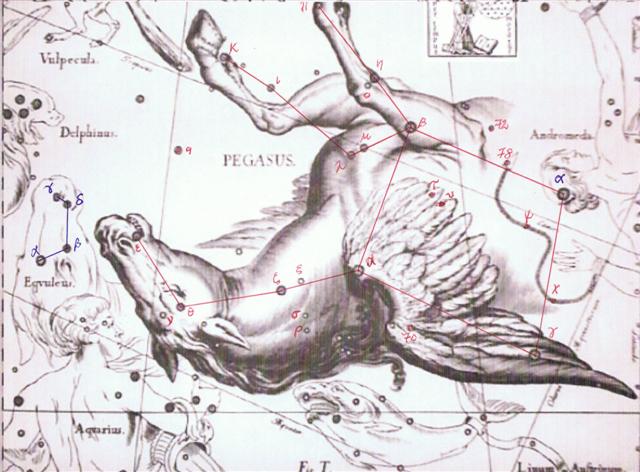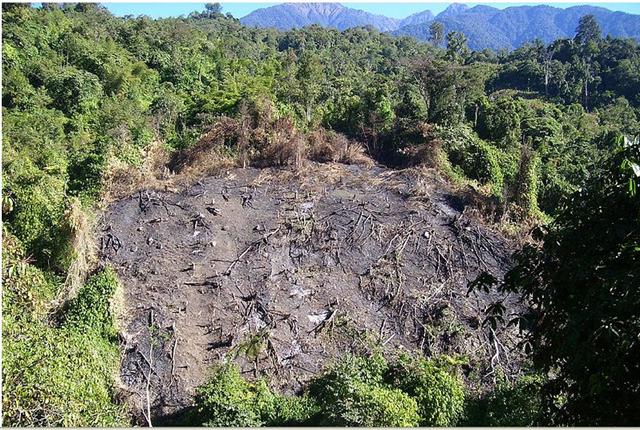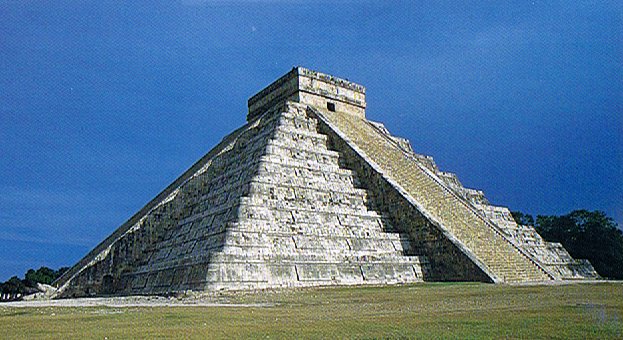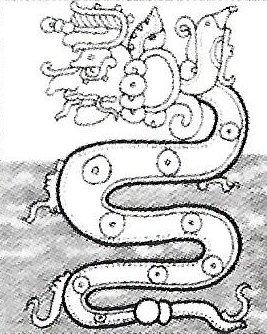44. We can then easily find the demarcation line drawn between Zosma and Coxa. It was drawn at the opposite side of the Pegasus Square.
When Old Sun reached March 7 he had fallen on his face (Cb6-27) and was like the ashes (te kihikihi) after the great fire in the sky.
But ashes contain much valuable ingredients which will fertilize new growth - kua tupu te kihikihi.
... When the man, Ulu, returned to his wife from his visit to the temple at Puueo, he said, 'I have heard the voice of the noble Mo'o [Moko], and he has told me that tonight, as soon as darkness draws over the sea and the fires of the volcano goddess, Pele, light the clouds over the crater of Mount Kilauea, the black cloth will cover my head. And when the breath has gone from my body and my spirit has departed to the realms of the dead, you are to bury my head carefully near our spring of running water. Plant my heart and entrails near the door of the house. My feet, legs, and arms, hide in the same manner. Then lie down upon the couch where the two of us have reposed so often, listen carefully throughout the night, and do not go forth before the sun has reddened the morning sky. If, in the silence of the night, you should hear noises as of falling leaves and flowers, and afterward as of heavy fruit dropping to the ground, you will know that my prayer has been granted: the life of our little boy will be saved.' And having said that, Ulu fell on his face and died ... September 6 was day 249 counted from January 1 and day 249 counted from 0h was day 80 + 249 = 329 November 25 - i.e. the day when Antares 'happened to' rise with the Sun. Down to the time when Elnath had been at 0h there were 80 precessional days - equal to the distance from September 6 to November 25. Cb6-26 at heliacal υ Pegasi would have been at the winter solstice at the time of Elnath.
... The Explorers left Hiva in the 25th day of the first month (Vaitu Nui) and arrived in Maro 1. Probably these dates referred to the time when Bharani was at 0h, and then "April 25 would have been when the Sun reached Cursa (β Eridani) and "June 1 where Castor rose with the Sun ...
When Nonoma (probably Jupiter) was out in the night urinating he sighted the double-canoe of Hotu A Matua: ... The canoes of Ava Rei Pua and of Hotu were seen near the (off-shore) islets. On the fifteenth day of the month of October (tangaroa uri) the canoe of Hotu and the canoe of Ava Rei Pua landed. On the fifteenth day of the month of October (tangaroa uri), Nonoma left the house during the night to urinate outside. At this point Ira called out to Nonoma, 'Look at the canoe!' Nonoma ran, he quickly went to Te Hikinga Heru (a ravine in the side of the crater Rano Kau) and looked around. There he saw the double canoe way out near the (offshore) islets, and the two (hulls of the canoe) were lashed together. He ran and returned to the front of the house. He arrived and called into the house: 'Hey you! This canoe has arrived during the night without our noticing it!' Ira asked Nonoma, 'Where is the canoe, which you say is lying out there (in the water)?' Nonoma's voice came back: 'It is out there (in the water) close to the (offshore) islets! There it lies, and the two (hulls) are lashed together.' The four of them (corrected for 'the six of them') went out and picked up leaves (on branches) to give signals. They picked them up, went and arrived at Te Hikinga and saw the canoe. Raparenga got up, picked up the leaves, took them in his hands, and waved, waved, waved, waved ...
I had deduced his urinating was referring to the hind quarters of the Lion and from there found out that the date Tagaroa Uri 15 ought to be a date from the time when Bharani was at 0h.
Gregory XIII launched his 'crooked canoe' in °October 15 (288 = 2 * 144) and this date of birth was suitable also for the arrival of the Sun King to Easter island. The Raven constellation had no central ruler, in principle there were only 4 corners without any central 'tent pole'. Although with a closer look 7 stars can be found, as depicted by the Chinese:
In Manuscript E number 6 had been crossed over and 4 inserted instead. There could not have been 7 Explorers at that time because Kuukuu (probably Mars) had been severely injured and carried into a cave - he was no longer visible. ... They all sat down and rested [on the plain of Oromanga], when suddenly they saw that a turtle had reached the shore and had crawled up on the beach. He [Ira] looked at it and said, 'Hey, you! The turtle has come on land!' He said, 'Let's go! Let's go back to the shore.' They all went to pick up the turtle. Ira was the first one to try to lift the turtle - but she didn't move. Then Raparenga said, 'You do not have the necessary ability. Get out of my way so that I can have a try!' Raparenga stepped up and tried to lift the turtle - but Raparenga could not move her. Now you spoke, Kuukuu: 'You don't have the necessary ability, but I shall move this turtle. Get out of my way!' Kuukuu stepped up, picked up the turtle, using all his strength. After he had lifted the turtle a little bit, he pushed her up farther. No sooner had he pushed her up and lifted her completely off the ground when she struck Kuukuu with one fin. She struck downward and broke Kuukuu's spine.The turtle got up, went back into the (sea) water, and swam away. All the kinsmen spoke to you (i.e. Kuukuu): 'Even you did not prevail against the turtle!' They put the injured Kuukuu on a stretcher and carried him inland. They prepared a soft bed for him in the cave and let him rest there. They stayed there, rested, and lamented the severely injured Kuukuu. Kuukuu said, 'Promise me, my friends, that you will not abandon me!' They all replied, 'We could never abandon you!' They stayed there twenty-seven days in Oromanga. Everytime Kuukuu asked, 'Where are you, friends?' they immediately replied in one voice, 'Here we are!' They all sat down and thought. They had an idea and Ira spoke, 'Hey, you! Bring the round stones (from the shore) and pile them into six heaps of stones!' One of the youths said to Ira, 'Why do we want heaps of stone?' Ira replied, 'So that we can all ask the stones to do something.' They took (the material) for the stone heaps (pipi horeko) and piled up six heaps of stone at the outer edge of the cave. Then they all said to the stone heaps, 'Whenever he calls, whenever he calls for us, let your voices rush (to him) instead of the six (of us) (i.e., the six stone heaps are supposed to be substitutes for the youths). They all drew back to profit (from the deception) (? ki honui) and listened. A short while later, Kuukuu called. As soon as he had asked, 'Where are you?' the voices of the stone heaps replied, 'Here we are!' All (the youths) said, 'Hey, you! That was well done!' ...
... Marija Gimbutas: 'To sleep within the Goddess's womb was to die and to come to life anew' ...
Alaraph (β Virginis) was 'unarmed', (s)he had no 'tent pole'. ... Ravens, unlike geese, loons and many other birds, do not in fact have penises - a fact recorded and accounted for in several ways in Northwest Coast mythology ... Live holothurians, when handled, have the disconcerting habit of transforming themselves suddenly from soft to hard or limp to stiff and back again. If handled enough, they will also ejaculate, disgorging their own viscera in apparent self-defence. This behavior is efficiently explained in a story Arthur Lewis told in Tsimshian to Gwüsk'aayn in the 1930s. The first holothurian, Lewis says, was the cast-off penis of the Raven ...
... Sea cucumbers have also inspired thousands of haiku in Japan, where they are called namako (ナマコ), written with characters that can be translated 'sea mice'. In English translations of these haiku, they are usually called 'sea slugs'; according to the Oxford English Dictionary, the term 'sea slug' originally referred to holothurians (in the 18th century), though biologists now use the name only for the nudibranch molluscs, marine relatives of land slugs. Almost 1,000 Japanese holothurian haiku translated into English appear in the book Rise, Ye Sea Slugs! by Robin D. Gill ... Hotu A Matua left his old homeland in Hora Nui 2: ... Hotu's canoe sailed from Maori to Te Pito O Te Kainga. It sailed on the second day of September (hora nui). The canoe of the king (ariki is used here incorrectly for tapairu 'queen'), of Ava Rei Pua, also sailed on the other side. They had attached the canoe of Ava Rei Pua to the middle of the canoe of Hotu ... Counting backwards from "October 15 (288) when Hotu arrived to Easter Island and to his departure from his old homeland in "September 2 (245) we will find that his sea voyage took 43 days. This can be compared with the time for the sea voyage of the Explorers: "June 1 (152) - "April 25 (115) = 37 days, which was 6 days shorter. The Explorers left Easter Island for their journey home 10 days after Hotu had arrived. I.e. they had stayed on Easter Island from "June 1 (152) to "October 25 (298) = 146 days. Counting from their departure from Hiva to their departure from Easter Island gives as a result the significant number 183 (= 366 / 2 = 298 - 115). The Fig Tree where Raven was delayed seems to refer to the place of Zosma and Coxa (Cb6-27), where the Full Moon was in the Pegasus Square and the sex of Atea changed from male to female: ... Atea then became the wife of Rua-tupua-nui, Source of Great Growth, and they became the parents of all the celestial beings, first the shooting stars, then the Moon and the Sun, next the comets, then the multitude of stars and constellations, and finally the bright and dark nebulae. When this tremendous task had been accomplished Atea took a third husband, Fa'a-hotu, Make Fruitful. Then occurred a curious event. Whether Atea had wearied of bringing forth offspring we are not told, but certain it is that Atea and her husband Fa'a-hotu exchanged sexes. Then the eyes of Atea glanced down at those of his wife Hotu and they begat Ru. It was this Ru who explored the whole earth and divided it into north, south, east, and west ...
... the bird, being sent with a cup for water, loitered at a fig-tree till the fruit became ripe, and then returned to the god with a water-snake in his claws and a lie in his mouth, alleging the snake to have been the cause of the delay. In punishment he was forever fixed in the sky with the Cup and the Snake; and, we may infer, doomed to everlasting thirst by the guardianship of the Hydra over the Cup and its contents. From all this came other poetical names for our Corvus - Avis Ficarius, the Fig Bird; and Emansor, one who stays beyond his time; and a belief, in early folk-lore, that this alone among birds did not carry water to its young ... The Serpent (Water) used the Tree to climb up again. After having earlier run down from the Square at the top of the Mountain:
His undulating climbing corresponded to the undulating text lines on a rongorongo tablet, rising from bottom up with the even lines carrying its glyphs oriented upside down. He was like the first Mayan day sign Imix (the Sea Dragon):
Considering the fact that there was another such snake on the other side of the rongorongo tablet we can recognize the caduceus of Hermes (Mercury):
|
||||||||||||||||||||||||||||||||||||||||||||||||||||||||||||||||||||||||||||||||||||||||||||||||||||||||||||||||||||||||||||||||||||||||||||||||||||||||||||||||||||||||||||||||||||||||||||||||||||||||||||||||||||||||||||||||||||||||||||||||||||||||||||||||||||||||||||||||||||||||||||||||||||||||||
























